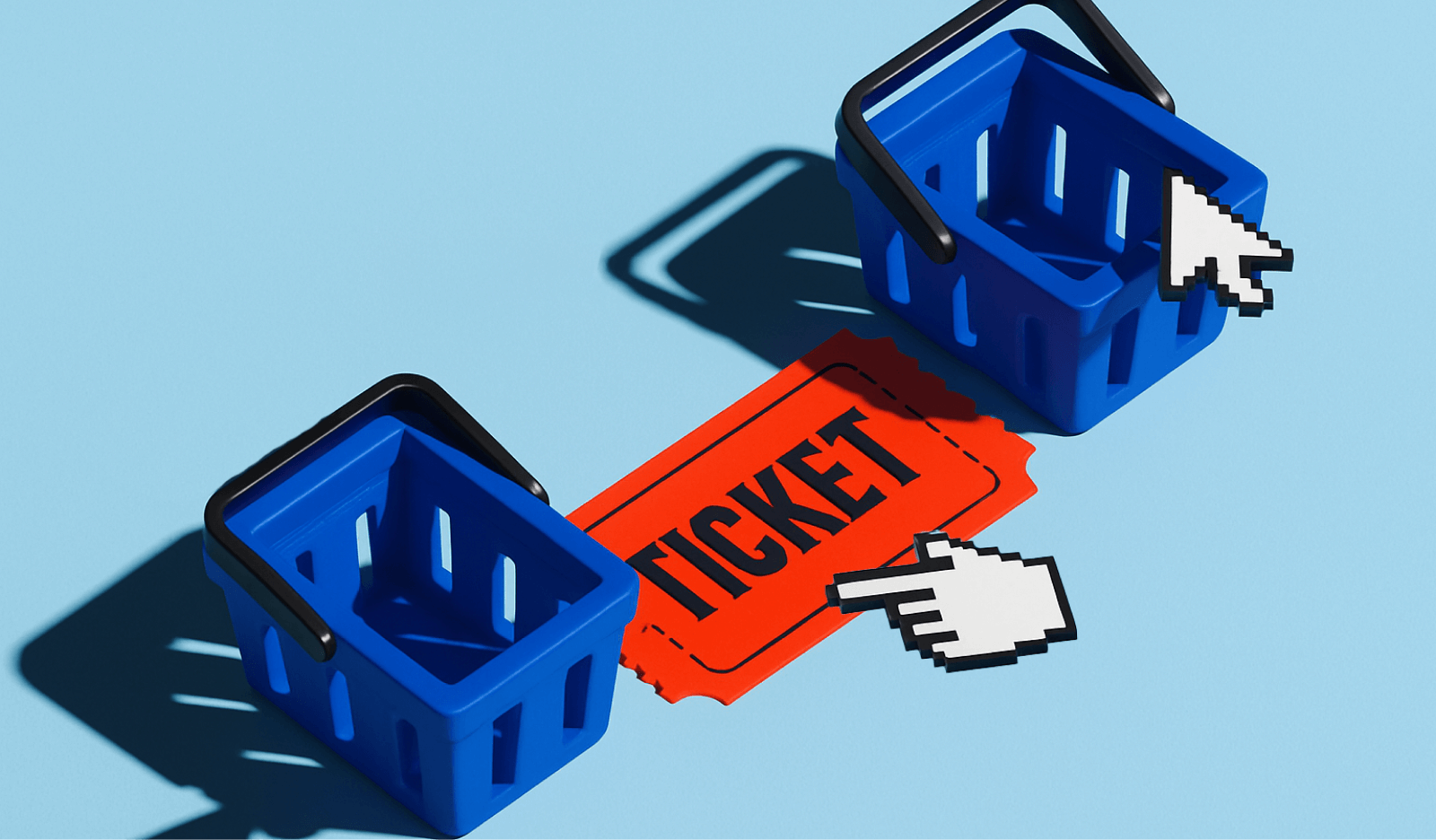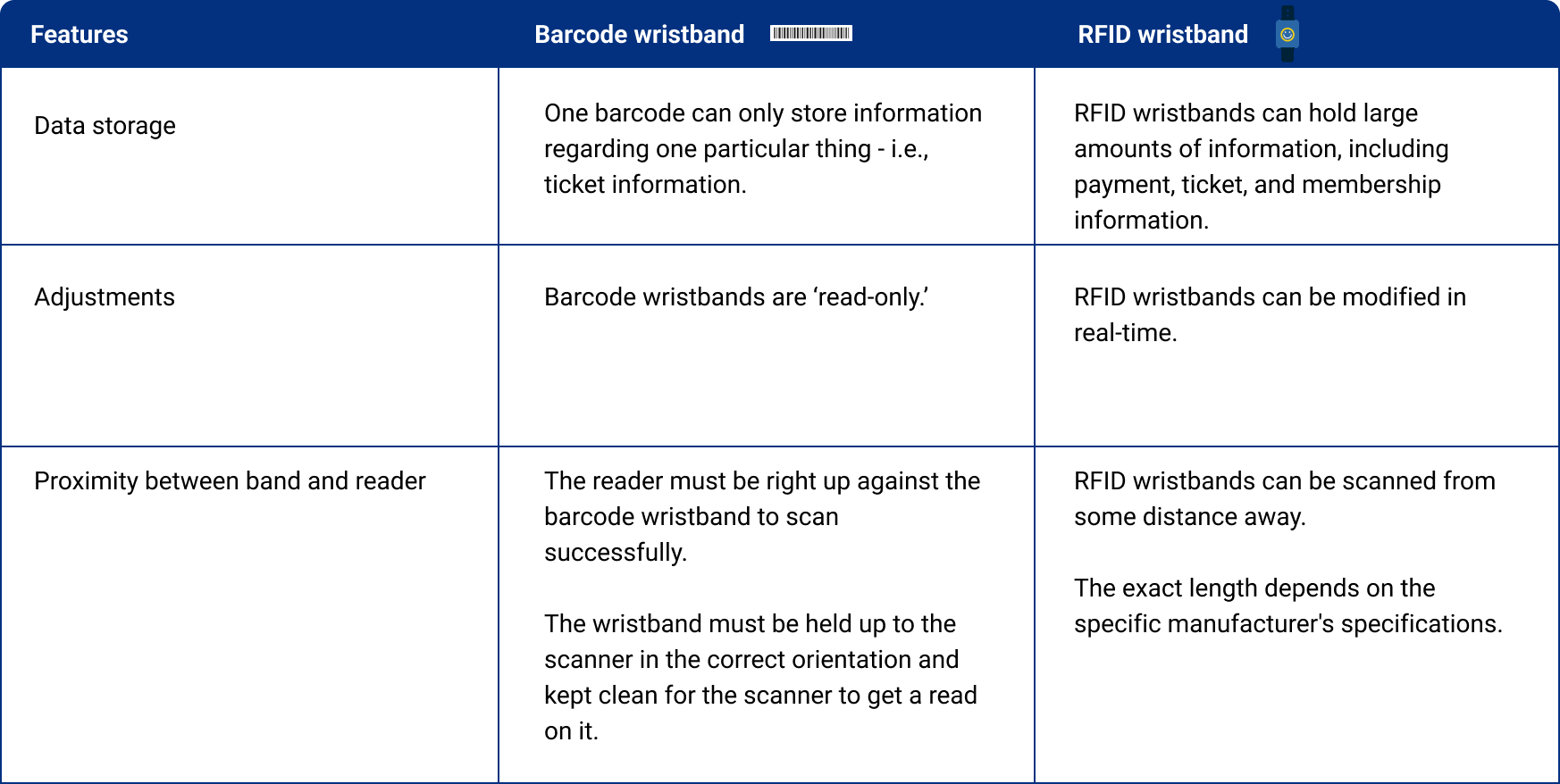RFID Wristbands: How They Can Benefit Your FEC
To increase guest spend and reduce congestion at entry points, venue operators are increasingly adopting RFID wristbands. Guests also love them for their ease of use, modern technology, and increased data protection.
You might’ve already seen RFID wristbands and wondered how they work and if they are much different from traditional barcode wristbands.
Here we discuss what RFID wristbands are, how they differ from barcode wristbands, and how they can benefit your FEC.
What is an RFID wristband?
Radio-frequency identification (RFID) wristbands are wristbands that can be worn and used by guests. They contain radio frequency identification technology that encodes digital data, like card or ticket details.
How do RFID wristbands work?
When a guest wearing an RFID wristband scans their band on an RFID reader (like an entry gate fitted with an RFID reader), the wristband data is captured.
Continuing with the above example of scanning the band on the entry gate, your guest will be allowed entry after this is done.
You can store many kinds of data on an RFID wristband. Guest card information can be stored for cashless payments, as well as ticket and membership information. The RFID wristband can effectively operate as your member's membership card.
What is an RFID card reader?
An RFID card reader is a device that gathers/reads the data stored in an RFID wristband. Radio waves transfer the data between the wristband and the reader.
What is the difference between RFID wristbands and barcode wristbands?
The main difference between RFID and barcode wristbands is the technology that powers them.
Otherwise, their primary purpose is the same — to allow the venue operator to obtain guest data when scanned.
View our comparison table below to find the main differences.
Are RFID wristbands waterproof?
Generally, RFID wristbands are waterproof. Most manufacturers will make them this way as it is more practical.
However, it is always best to check before purchasing — this information should be readily available on the manufacturer/reseller's website.
Benefits of using RFID wristbands
Streamlined, easy entry process
We all know how much guests hate waiting in line, so allowing them to check in using RFID wristbands enables a better guest experience in a few ways:
- Reduces bottlenecks at entry and avoid queues
- Encourages guests to purchase tickets beforehand, and
- It makes guests feel like VIPs.
Read this next: Virtual Queuing: What Is It & How Does It Work?
Increased guest spending with cashless payments
When you adopt RFID wristbands, you make it even easier for your guests to spend more. When all their card details are stored in their RFID wristband, they don’t have to think twice about spending with you as you’ve made it so easy for them!
Not to mention — having card details stored in a band on your guests’ wrist is convenient AND safer than carrying a physical card!
Read this next: Payment Tokenization: A Beginner's Guide
Increased security and decreased chance of theft
Unless someone was to yank the RFID wristband off your guest's wrist, there is very little chance of theft.
Compared to if your guest was carrying their physical wallet, cash, cards, ID, tickets, etc., having everything stored in a wristband is a massive piece of mind for your guests.
Real-time analytics available
You can track your guests' RFID wristbands in real-time and see which attractions they visit the most in your venue, which merchandise or F&B they purchase most, etc.
With this information, you can make real-time decisions on areas of your venue that you feel are not highly profitable and where you might consider redirecting funding.
RFID wristbands benefit you and your guests
Using an RFID wristband is an experience that is unique, modern, and gaining a lot of excitement with guests everywhere.
Chief among the many benefits of adopting RFID wristbands into your FEC include increased guest spending and satisfaction, so it is an addition to your venue that is definitely worth considering.
Related articles


How to Sell Tickets Online: A Complete Guide for Attraction Venues

Business Analytics Software for Attractions: Turn Guest Data Into Revenue
Enhance your guest experience
Get free education, tips and inspiration to help you run a successful venue.
